Moka Coffee vs Espresso: A Complete Brewing Guide
When it comes to strong, concentrated coffee, the Moka pot and espresso machine are two popular brewing methods that often get compared. But how do they differ? And which one is better suited for your coffee preferences?
This guide will cover:
-
Moka Coffee vs Espresso: What’s the Difference?
-
How to Brew Moka Coffee & Espresso at Home
-
Which One Has More Caffeine?
-
Frequently Asked Questions (FAQ)
Moka Coffee vs Espresso: What’s the Difference?
|
Feature |
Moka Coffee |
Espresso |
|
Brewing Method |
Uses stovetop pressure to force water through coffee grounds |
Uses high-pressure extraction (9 bars) |
|
Texture |
Thicker than drip coffee, but not as creamy as espresso |
Rich, full-bodied with a layer of crema |
|
Pressure Used |
1-2 bars |
9 bars |
|
Brew Time |
5-10 minutes |
25-30 seconds |
|
Grind Size |
Fine (slightly coarser than espresso) |
Very fine, almost powdery |
|
Serving Size |
50-100ml per brew |
30ml per shot (single espresso) |
|
Flavor Profile |
Strong, bold, but slightly bitter |
Smooth, intense, and well-balanced |
1. The Brewing Process
-
Moka Coffee: Uses steam pressure (1-2 bars) to push hot water through finely ground coffee. This method results in a strong, rich coffee, but with a slight bitterness due to over-extraction.
-
Espresso: Uses high pressure (9 bars) to extract coffee in a short time, preserving its sweetness, acidity, and crema.
How to Brew Moka Coffee & Espresso at Home
Moka Coffee Recipe
Ingredients:
-
20g finely ground coffee (medium-dark roast recommended)
-
150ml filtered water
-
A stovetop Moka pot
Steps:
-
Fill the bottom chamber of the Moka pot with fresh, filtered water (up to the safety valve).
-
Add coffee grounds into the filter basket and level it off without tamping.
-
Assemble the Moka pot and place it on medium heat.
-
Wait for the coffee to brew - you’ll hear a gurgling sound when it’s done.
-
Serve immediately to enjoy a bold, aromatic cup.
Espresso Recipe
Ingredients:
-
18-20g finely ground coffee (single shot)
-
30ml filtered water
-
Espresso machine
Steps:
-
Preheat the espresso machine and portafilter.
-
Tamp the coffee grounds evenly into the portafilter basket.
-
Lock the portafilter into the machine and start the extraction process.
-
Brew for 25-30 seconds - you should get a balanced shot with a golden crema.
-
Serve immediately or use it as a base for lattes and cappuccinos.
Which One Has More Caffeine? A Detailed Comparison
When comparing Moka coffee and espresso, the caffeine content depends on several factors, including brewing method, serving size, and coffee-to-water ratio. Let’s break it down further:
1. Caffeine Content Breakdown
|
Factor |
Moka Coffee (100ml) |
Espresso (Single Shot – 30ml) |
Espresso (Double Shot – 60ml) |
|
Caffeine Content |
~120-150mg |
~63mg |
~126mg |
|
Concentration |
~1.2-1.5mg per ml |
~2.1mg per ml |
~2.1mg per ml |
|
Serving Size |
~100ml per brew |
~30ml per shot |
~60ml per doppio |
-
Moka Coffee: Contains more caffeine per serving because a standard Moka pot brews around 100ml of coffee at once. However, it is less concentrated than espresso due to its larger volume.
-
Espresso: Contains less caffeine per serving but is more concentrated, delivering a stronger caffeine hit in a small amount of liquid.
2. Why Does Moka Coffee Have More Caffeine?
Even though espresso is more concentrated, Moka coffee often has a higher total caffeine content per serving due to:
-
Longer Brewing Time: Moka pots use pressure-driven extraction but at a lower pressure (~1-2 bars vs. 9 bars in an espresso machine), leading to longer contact time between water and coffee grounds. This allows for more caffeine extraction.
-
Larger Serving Size: A Moka pot typically brews 100ml per serving, compared to the 30ml of a single espresso shot. Since caffeine is measured per total serving size, Moka coffee ends up with more overall caffeine.
-
Higher Coffee-to-Water Ratio: Moka pots require more ground coffee than drip or espresso machines, resulting in a stronger brew with more caffeine content.
3. Why Is Espresso More Concentrated?
Despite having a smaller caffeine total per serving, espresso is more potent per milliliter because:
-
Higher Pressure Extraction: Espresso machines force hot water through finely ground coffee under 9 bars of pressure, extracting caffeine and oils quickly.
-
Shorter Contact Time: Espresso is brewed in 25-30 seconds, meaning it extracts caffeine rapidly and efficiently in a small amount of water.
-
Fine Grind Size: The finer grind of espresso maximizes surface area, leading to efficient caffeine extraction in a short time.
💡 This is why espresso delivers a more immediate “kick” despite having a lower total caffeine content than a full Moka pot serving.
4. Which One Gives a Stronger Energy Boost?
-
Espresso → Delivers a quick, intense caffeine hit due to high concentration. Perfect if you need an instant wake-up.
-
Moka Coffee → Provides a longer-lasting caffeine boost since it contains more caffeine per serving and is typically sipped in a larger quantity.
💡 If you need a quick, sharp jolt of energy, go for espresso. If you prefer a steady caffeine release over time, Moka coffee is the better choice.
5. How to Adjust Caffeine Levels in Moka Coffee & Espresso
Want More Caffeine?
-
For Moka coffee, use a stronger roast or increase the coffee-to-water ratio.
-
For espresso, simply pull a double shot (doppio) instead of a single shot.
Want Less Caffeine?
-
Use a lighter roast, as dark roasts tend to have slightly less caffeine.
-
Use decaf coffee beans, which contain about 3-5mg of caffeine per shot.
Frequently Asked Questions (FAQ)
Q: Can I use espresso beans in a Moka pot?
Yes! You can use espresso beans in a Moka pot, but the roast level and grind size make a big difference in flavor.
-
Best Roast Level:
-
Medium to Medium-Dark Roasts work best, offering a rich, bold flavor without excessive bitterness.
-
Ultra-Dark Roasts (like French Roast) can become overly bitter and ashy due to the longer extraction time.
-
Best Grind Size:
-
Slightly finer than drip coffee but coarser than espresso.
-
Too fine = over-extraction and bitterness.
-
Too coarse = weak, under-extracted coffee.
💡 Tip: If your Moka pot coffee tastes burnt, try a medium roast instead of dark.
Q: Why is my Moka coffee bitter?
Moka coffee should be strong but not overly bitter. If it tastes burnt or harsh, these factors might be the cause:
-
Over-Extraction:
-
If the coffee is in contact with hot water for too long, it extracts bitter compounds.
-
Solution: Use a slightly coarser grind (not as fine as espresso).
-
Too Much Heat:
-
High heat causes rapid extraction, leading to a burnt taste.
-
Solution: Brew on medium-low heat for a smoother flavor.
-
Stale Coffee Beans:
-
Old or pre-ground coffee loses freshness and tastes flat or bitter.
-
Solution: Use freshly ground beans for the best taste.
-
Overpacked Coffee Basket:
-
Unlike espresso, Moka pots don’t require coffee to be tamped.
-
Solution: Fill the basket evenly but do not press down.
💡 Tip: Stop brewing as soon as the coffee starts gurgling - letting it boil can cause bitterness.
Q: Does Moka coffee taste like espresso?
Not exactly. Moka coffee is often called "stovetop espresso," but there are key differences:
-
Pressure:
-
Moka Pot → ~1-2 bars of pressure
-
Espresso Machine → 9 bars of pressure
-
This means Moka coffee lacks the thick crema and intense concentration of espresso.
-
Texture & Flavor:
-
Moka coffee is strong and bold but can taste slightly harsher and less balanced than espresso.
-
Espresso is smoother, richer, and more refined due to precise pressure and temperature control.
💡 Tip: If you want a smoother Moka coffee, try adding a splash of hot water (like an Americano) or steaming some milk for a faux latte.
Q: Can I make espresso without an espresso machine?
No, true espresso requires at least 9 bars of pressure, which only an espresso machine can provide. However, you can make strong, espresso-like coffee using:
-
Moka Pot – Makes a bold, concentrated coffee but lacks true crema.
-
AeroPress (with metal filter & espresso-style method) – Can produce a rich, smooth coffee with some crema-like texture.
-
French Press (with double brewing technique) – Not espresso, but can create a strong, full-bodied coffee.
💡 Tip: If you want real espresso at home without a large machine, consider a manual espresso maker (like the Flair or Wacaco Nanopresso), which can reach 9 bars of pressure.
Q: Which one is better for lattes and cappuccinos: Moka coffee or espresso?
Espresso is the best choice for lattes and cappuccinos because of its balanced coffee-to-milk ratio and crema, but Moka coffee can be a good alternative.
-
Espresso (Best Choice)
-
Stronger, richer flavor holds up better against milk.
-
Produces crema, adding texture and depth to the drink.
-
Moka Coffee (Alternative Choice)
-
Strong, but slightly less refined and more bitter.
-
Lacks crema, so the milk doesn’t blend as smoothly.
💡 Tip: If using Moka coffee in lattes or cappuccinos, use slightly less milk to maintain a strong coffee flavor. Adding a small amount of frothed milk instead of heavy foam works better.
Perfect Your Moka & Espresso Experience with Bazan Coffee
At Bazan Coffee, we understand that a great Moka pot or espresso shot starts with high-quality beans. The balance between rich crema, bold body, and smooth flavor depends on selecting the right coffee - one that enhances both intensity and complexity in every sip.
Unlike mass-produced brands, Bazan Coffee prioritizes craftsmanship and sustainability, ensuring that every batch is carefully sourced and roasted to highlight its natural depth and character. Whether you prefer the robust extraction of a Moka pot or the precision of an espresso machine, our Fine Robusta and high-altitude Arabica guarantee an exceptional brew.
The New Revolution: Fine Robusta from Vietnam
For years, Robusta coffee was overlooked, but Vietnam’s Fine Robusta is now redefining specialty coffee. With high-altitude cultivation, expert fermentation techniques, and precise processing methods, Bazan Coffee’s Fine Robusta – Krong Nang delivers deep chocolatey notes, caramelized sweetness, and a luxuriously thick crema - making it ideal for both Moka and espresso brewing.
Why Choose Fine Robusta – Krong Nang for Moka & Espresso?
-
Grown at 650m in Krong Nang, Dak Lak, where volcanic soil enhances natural complexity.
-
72-hour natural anaerobic fermentation, unlocking honey-like smoothness, deep caramelized flavors, and a full-bodied profile.
-
Naturally low acidity and a bold, creamy texture, perfect for a strong yet balanced espresso or Moka brew.
-
Twice the caffeine content of Arabica, providing an intense, energizing coffee experience.
If you love a bold, full-bodied espresso or Moka pot coffee with velvety crema and deep sweetness, Fine Robusta – Krong Nang is your go-to choice.
Not Just Robusta – The Best of Both Worlds
For those who enjoy a balanced and aromatic espresso or Moka pot coffee, Bazan’s Special Vietnam Blend offers the perfect harmony of smoothness and intensity. By blending high-altitude Arabica with Fine Robusta, this coffee provides a well-rounded espresso with natural sweetness and complexity.
Special Vietnam Blend: A Perfect Harmony of Strength and Smoothness
-
A fusion of high-altitude Arabica’s bright acidity and Fine Robusta’s rich depth, creating a complex yet smooth espresso.
-
Tasting notes of pineapple, floral aroma offering a naturally sweet, well-balanced cup.
-
Versatile for various brewing methods, making it ideal for Moka pot, espresso machines, and manual extractions.
If you appreciate a coffee that blends strength with elegance, Special Vietnam Blend is the ideal choice.
For a More Refined and Elegant Espresso: Specialty Arabica – Cau Dat
For those who love a clean, bright espresso with floral and spicy undertones, Bazan Coffee’s Specialty Arabica – Cau Dat delivers a refined and aromatic coffee experience.
Why Choose Specialty Arabica – Cau Dat?
-
Grown at 1,550m in Cau Dat, Da Lat, one of Vietnam’s most renowned high-altitude coffee regions.
-
Fully washed processing, ensuring clarity of flavor, balanced acidity.
-
Tasting notes of bell pepper, spices, and caramel, creating a delicate, layered espresso.
If you prefer a smooth, aromatic espresso or Moka brew with subtle floral and spice notes, Specialty Arabica – Cau Dat is the perfect match.
Which Coffee Should You Choose for Moka & Espresso?
-
For a bold, intense espresso or Moka coffee with deep caramelized sweetness → Fine Robusta – Krong Nang
-
For a smooth, well-balanced Moka or espresso with fruity brightness and floral aroma → Special Vietnam Blend
-
For a bright, refined espresso with floral complexity → Specialty Arabica – Cau Dat
Your Moka pot and espresso experience starts with premium beans. Whether you love the intensity of Fine Robusta, the balanced complexity of Special Vietnam Blend, or the refined elegance of Cau Dat Arabica, Bazan Coffee ensures that every sip is a celebration of Vietnam’s finest coffee.
Shop Bazan Coffee today and craft the perfect Moka or espresso with our premium selections!



